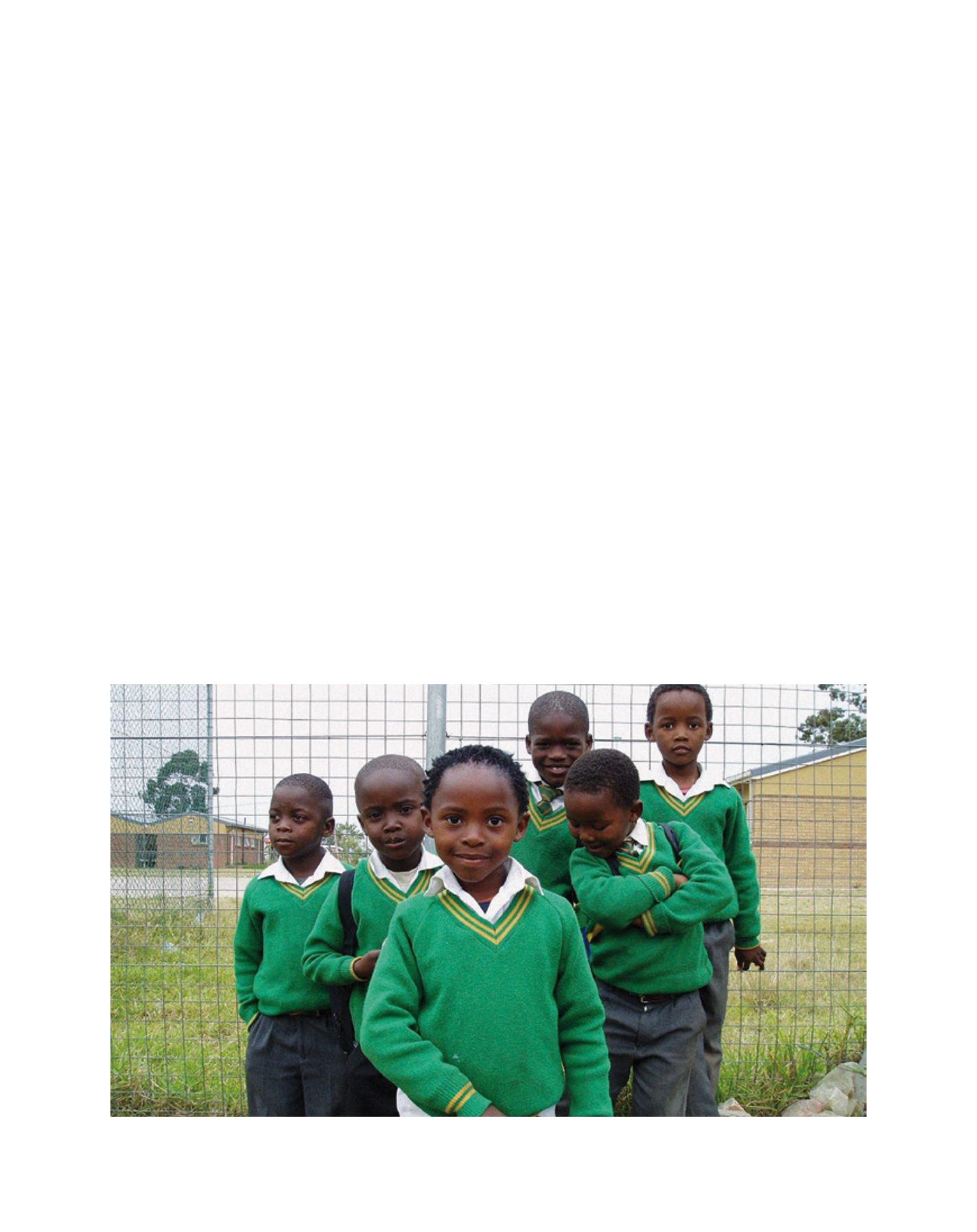

[
] 187
tices in the school. She finds that the children are more
concerned about the sanitation issues in their school
than the litter. They want to learn how to solve the
problem of poorly managed toilets, not pick up litter!
The researcher sensitively engages the teachers and
learners in dialogue, and soon after this, the children
are being listened to by their teachers. The teachers and
learners start to work out how the sanitation problems
could be addressed, and a more participatory form of
learning is established. It is also more transformative.
In a completely different context, another young
researcher, also interested in transformative learn-
ing, is observing how community members in a poor
rural community are learning how to commercialize
beekeeping.
5
Commercialization of beekeeping has
been identified by governments across southern Africa
as a strategy to alleviate poverty in rural areas, and to
develop entrepreneurship skills. In his observations
the researcher notices that, while the intention is to
support transformative learning, the manuals for the
training have been developed only in English, which
few of the adults involved in the beekeeping training
can read. He is also puzzled by the fact that, even if
there is economic benefit, some of the community
members are not interested in the beekeeping practices
they are being taught. After some time, he discovers
that the trainers have failed to take local culture into
account. In the particular area where he is undertaking
these observations, people believe that bees are their
ancestors and that it is wrong to put them in a box.
The researcher, working with the trainer, engages the
the waste, which they happily do. After that the teacher suggests
that they build a small recycling station in the school, and that they
make a poster about waste with the heading ‘STOP WASTE’. Again
the children do this. The lessons are over and the teacher moves on
to the next topic.
A young researcher, interested in transformative learning and
education for sustainable development (ESD),
2
visits the school. She
talks to the teacher about the lesson, and asks the children what
they have learned. The children tell her “Oh, we just picked up
litter – it was boring.” The researcher notices too that the children
are not using their small recycling station. Passionate about ESD, the
researcher is pleased that the teacher is focusing on waste – after all,
this is a major local problem. But she is not so pleased about what
the children have actually learned as a result. Could the teacher have
done this differently? What could the children have learned that
would make this learning ‘transformative’?
The problem identified here by the researcher is a common problem.
Often teachers expose learners to ESD topics or content, or even to
interesting activities such as building a local recycling station and
making a poster, but the learning that results is not transformative.
In Botswana, another young researcher visits some schools. She
is also interested in ESD and transformative learning, and in how
children are participating in waste management practices in the
school.
3
The Botswana government has emphasized participation
in ESD. Policies expect teachers to engage learners in participatory
approaches to learning.
4
In a number of schools, the researcher
observes teachers instructing children to clean up the school and
to pick up litter. Teachers are pleased because the children are
active and busy, picking up litter and keeping their schools clean.
Interested in the views of the children, the researcher talks to them
in great depth about how they participate in waste management prac-
Transformative learning involves meaningful participation where teachers are willing to listen to learners and engage in dialogue
Image: EcoSchools
















